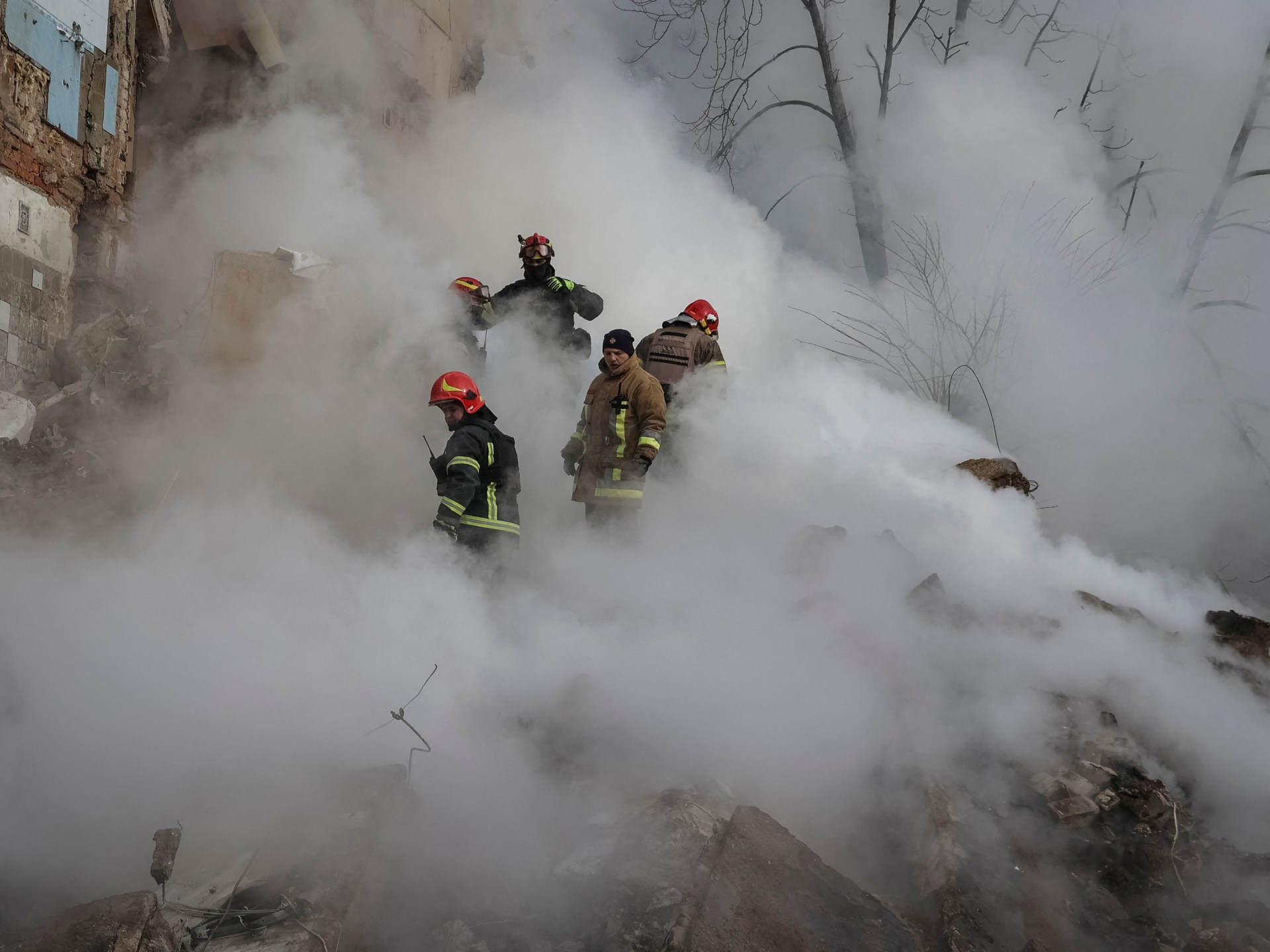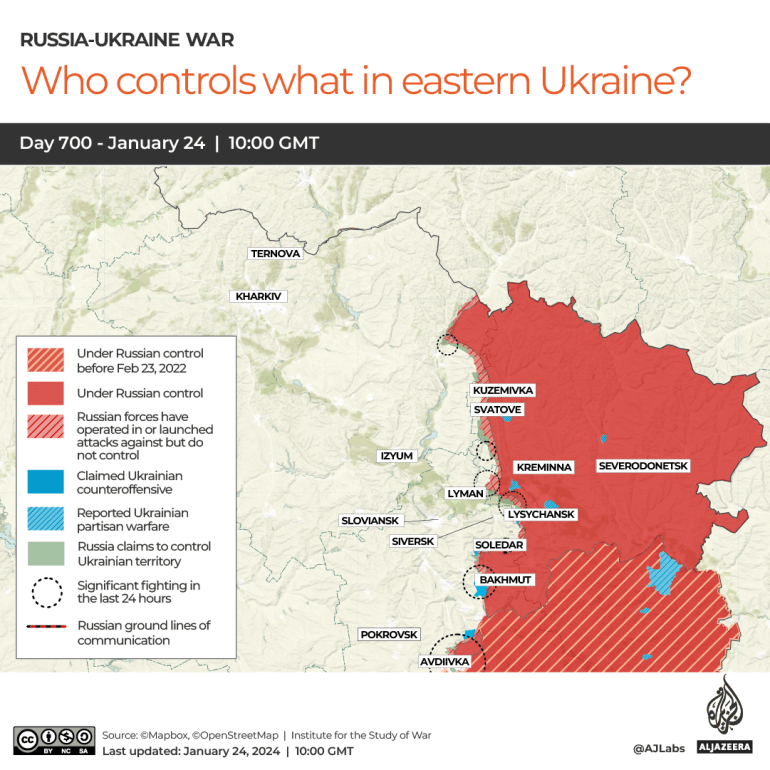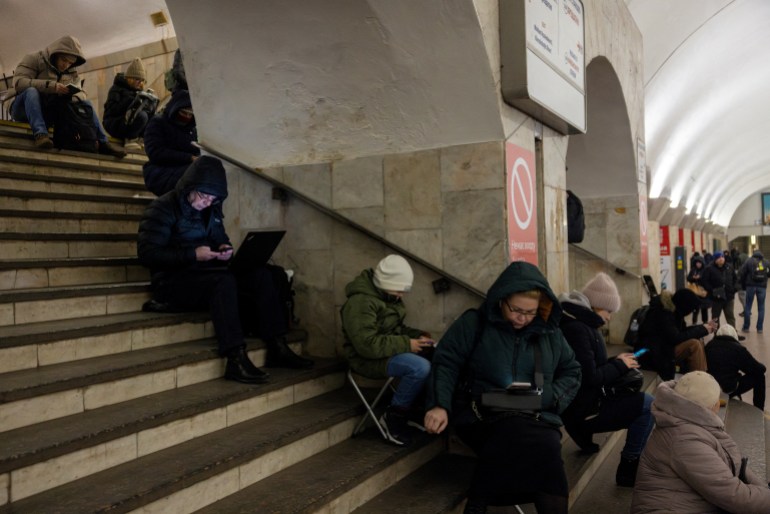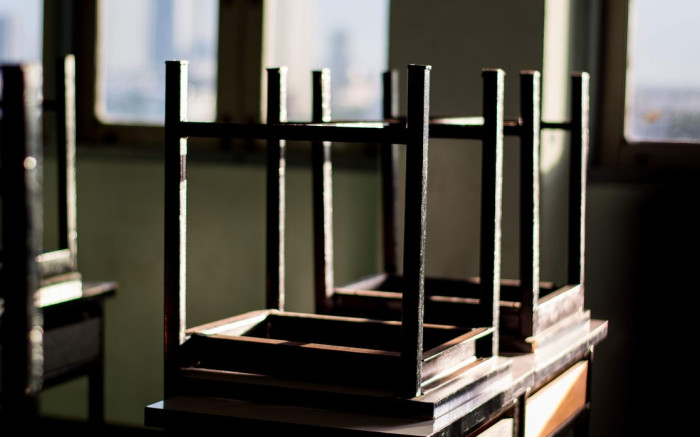
Russia and Ukraine engaged in deadly airstrikes on civilian centers in the past week of war, but Ukraine also suffered attacks on military and economic infrastructure deep in the Russian heartland, extending its reach as far as St. Petersburg for the first time.
Ukrainian military intelligence said it attacked an unspecified military target in St. Petersburg on Thursday using drones launched from Ukrainian soil.
Ukrainian Minister of Strategic Industry Oleksandr Kamyshin confirmed the attack World Economic Forum in Davos that the attack was carried out by a Ukrainian-built drone that was 1,250 km (780 miles) from Ukrainian soil.
The Russian Defense Ministry said three drones were launched that day and all three were shot down over the Gulf of Finland, one of them near an oil terminal.
On Sunday, Ukraine attacked again in multiple locations, and this time the evidence of their success was clear.
Russian gas producer Novatek, citing Security Service (SBU) sources, said it had suspended operations at a plant and loading terminal at the port of Ust-Luga near St. Petersburg following a fire that Ukrainian media attributed to a drone attack led back.
Novatek said it resumed loading on Wednesday, but it could take weeks or months for plant operations to return to normal, analysts said. This meant the company would lose money by exporting low-quality gas condensate rather than processed naphtha, kerosene and gas oil.
Kremlin spokesman Dmitry Peskov said air defenses would be strengthened after the attack.
Ukraine also claimed to have attacked the Shcheglovsky Val plant in Tula, 150 km (93 miles) south of Moscow, which reportedly produces the Pantsir-S and Pantsir-S1 air defense systems.
Geolocated footage also showed smoke rising from the city of Smolensk, near Russia’s border with Belarus, suggesting a possible third attack that day.
Ukraine has been developing its own long-range air and surface drones since at least the middle of last year, when it attacked several military targets in Crimea and the Black Sea.
Unlike donated Western weapons, they are not subject to restrictions on their use on Russian soil.

Oleksiy Danilov, secretary of the National Defense and Security Council of Ukraine, claimed that Ukraine is among the top three drone manufacturers in the world.
Ukraine is suspected of being responsible for the shelling of the city of Donetsk in the occupied east, which caused deaths at least 27 people on Sunday, although it did not claim the attack.
Russia has routinely targeted Ukrainian cities, again with deadly consequences. Kharkiv exacted the highest toll.
Russian missiles killed 18 people and injured an estimated 130 in various cities on Tuesday, but eight of the dead were in Kharkiv, the mayor said, where there were three waves of attacks. At least 100 high-rise buildings were hit in the city.

Ukraine defended its airspace against the repeated attacks.
Last Wednesday, 19 of 20 Shahed drones were shot down, on Thursday 22 of 33 drones and on Saturday four of seven drones were shot down.
In any case, Russia also deployed a small number of missiles, as it has done for months, copying a Ukrainian tactic aimed at overloading air defense systems.
A Pentagon official said they were exploratory strikes as Russia looked for vulnerabilities in its defenses.
“So far they have not succeeded. “Ukrainians have gained a lot of experience in dealing with such Russian attacks in recent years,” Deputy Defense Minister Celeste Wallander told reporters.
What was special about Tuesday’s attack was that Russia did not use drones. It fired 44 rockets of different types, half of which Ukraine intercepted, most of them over Kiev.
No end in sight
Ukraine’s Western allies continued to promise arms and ammunition and predicted a third year of war as defiant Russian rhetoric left little hope of early negotiations.
“The existence of Ukraine is life-threatening for Ukrainians,” Dmitry Medvedev, deputy chairman of Russia’s powerful Security Council, wrote on the messaging app Telegram.
“The presence of an independent state on historic Russian territories will now be a permanent reason for the resumption of hostilities,” he said, highlighting an irredentist policy towards all of Ukraine.
“There is a 100 percent chance of a new conflict,” Medvedev said, even if Ukraine joined the EU and NATO. “This could happen in 10 or 50 years.”
Some in Europe took Russia at its word.

“We hear threats from the Kremlin almost every day … so we have to expect that Vladimir Putin could one day even attack a NATO country,” German Defense Minister Boris Pistorius told Tagesspiegel.
“Our experts estimate a period of five to eight years in which this could be possible,” said Pistorius.
It was the latest in a series of ominous warnings. The NATO Military Committee Boss called for a NATO “warfare transformation” two weeks ago.
And the commander-in-chief of Sweden, which moved a step closer to NATO membership when Turkey’s parliament ratified its request on Tuesday, last week urged Swedes to prepare for war.
Even Russian Foreign Minister Sergei Lavrov, who declared last September that Russia was ready for talks, said Russia would “consistently and persistently achieve the goals of its ‘special military operation’.”
Looking for ammunition
Accordingly, Western governments have increased ammunition production. Different estimates suggest that Russia has an advantage in artillery shells of between 5:1 and 10:1.
There are concerns that the disparity could harm Ukraine’s strong defenses. Last week, for example, Ukraine retreated a few hundred meters in Kharkiv, where Russia is relentlessly attacking the front lines.
EU Internal Market Commissioner Thierry Breton said on Saturday that the EU defense industry was capable of producing one million artillery shells a year by April, 1.4 million by the end of the year and more next year.
The defense industry has complained that it cannot increase production unless governments sign long-term contracts, and NATO on Tuesday made up some of that shortfall through a $1.2 billion contract with two manufacturers for 200,000 rounds Artillery ammunition balanced.
The NATO Support and Procurement Agency (NSPA) struck the deal on behalf of allies, who will either transfer the shells to Ukraine or use them to replenish their own depleted stocks.

Poland On Monday became the latest EU member after Germany, Estonia and Latvia to sign a bilateral defense agreement with Ukraine until 2024. Germany announced that it would provide six Sea King helicopters to monitor coastal waters.
Ukrainian President Volodymyr Zelensky said he expects to sign a series of “strong” defense packages for Ukraine “at specific dates” this month and next
Those bilateral agreements ignored a Hungarian veto of a four-year, 50 billion euro EU financial aid plan for Ukraine and a 20 billion euro defense aid plan this year that would reimburse members for some of their donations.
European lawmakers also took a step last Thursday to strip Hungary of its voting rights in the EU [January 18] as they called on the European Council of Heads of Government to examine whether Hungary had committed “serious and persistent breaches of EU values”. Suspension of a Member’s voting is possible under Article 7 of the Treaty on European Union, but has never been used.






Recent Comments